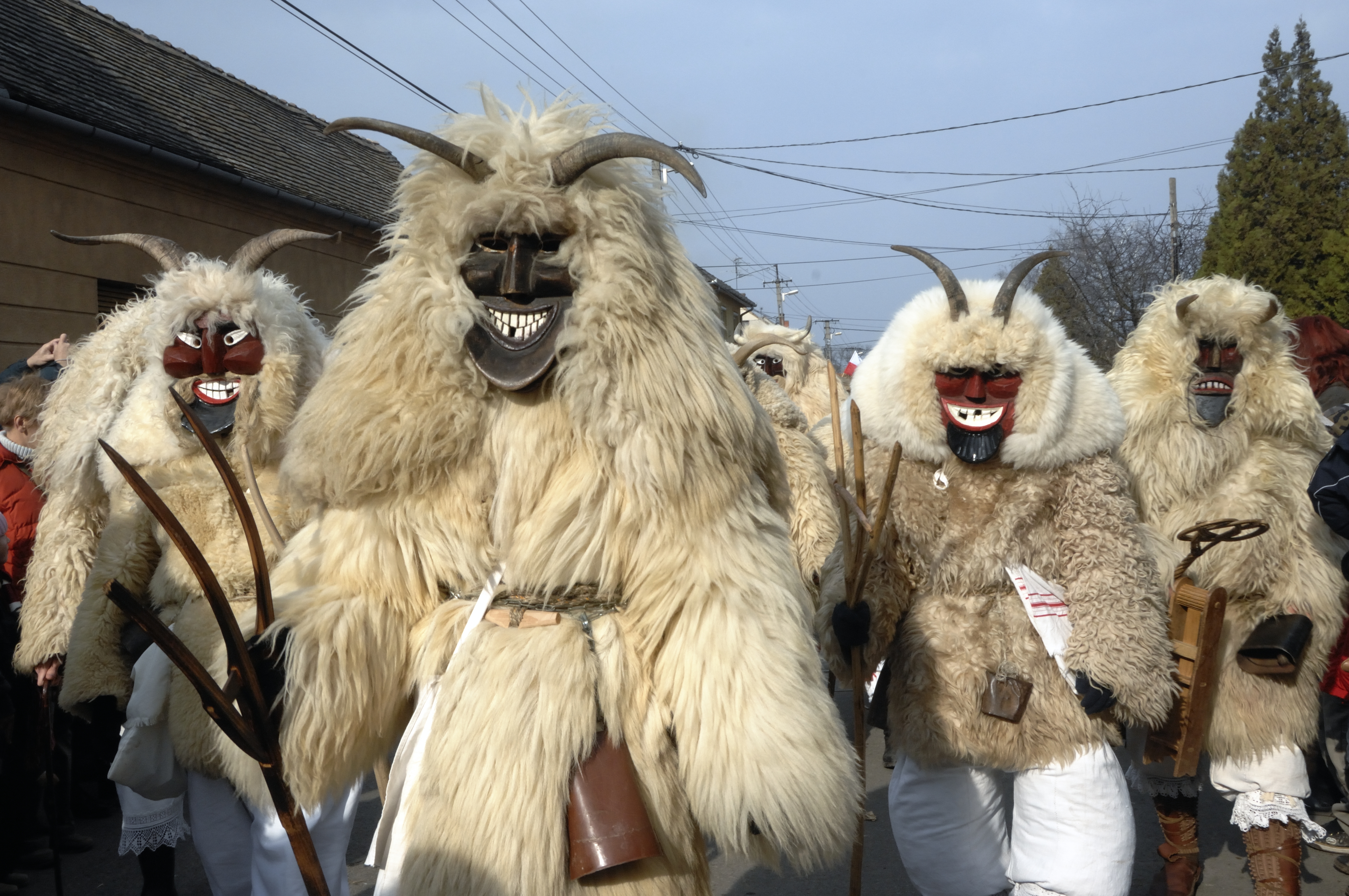Legend has it that in 1687 the villagers of Mohács managed to defeat the Turkish army by scaring them away with the help of horrible wooden masks. It is however, more likely, that the tradition arrived about a decade later with the Croatian settlers, whose descendants still play an active part in the festivities. Very similar masks and costumes are found in Bulgaria, parts of Switzerland, Italy and Spain, indicating links with an ancient, pagan ritual associated with spring fertility celebrations.

Mohács, located about 200 km south of the capital, is the best-known Carnival location in Hungary. The six-day-long festival starts on the Thursday before Shrove Tuesday (27th February to 4th March in 2014) with the main parade held on Sunday afternoon, 2nd March. This tradition is acknowledged by UNESCO as Intangible Cultural Heritage, and the masquerades, folk music and dance performances, children’s activities, gastro events and handicraft fairs attract several thousand visitors.
The busos, wearing big sheepskin costumes and horned wooden masks make an impressive entrance: they arrive in rowboats from across the Danube and parade through the city, making noise with cowbells and rattles, to scare away winter. Some of them arrive riding fantastical motorized or horse-drawn vehicles. Their helpers, the ‘Jankele’, are groups of children roaming the streets, dressed in rags and wearing stockings for masks, who carry sacks filled with rags to give a playful beating to the girls. In the evening the celebrations concentrate around the huge bonfire in the main square of Mohács, where a coffin symbolizing winter is burned, while over 500 busos dance around in a circle, making an even bigger racket, just to make sure that winter will definitely not come back.

The frightening, devil-like creatures preserve, in fact, ancient folk traditions, as each mask is unique: the skills of carving and painting them are passed down from generation to generation. The festival also features a children’s costume contest, while the art of mask carvers and other craftspeople can be witnessed live. Buso masks are also available as souvenirs unique to Mohács. Other costumes appearing in the parade are the priest, the devil, the old man and woman, and carved animal masks, such as the bull, the boar and the monkey.
This carnival tradition is constantly shaped by the buso groups, which are still based on family ties or strong friendships. The members of each group meet regularly throughout the year to discuss preparations, costumes, parade routes. The masked busos are almost exclusively male, women are occasionally allowed but are expected to pretend they are men while wearing the costume. The children and women of the buso groups are welcome in the parade in their Croatian (sokác) national costume. Since only a black and white cloth mask covers their faces, they are called “pretty busos.” The buso groups are in constant rivalry, trying to come up with new ways to entertain the crowds, while preserving the traditions at the same time.
Vocabulary
ancient – ősi
boar – vaddisznó
bonfire – máglya
cloth – anyag, textil
coffin – koporsó
contest – verseny
cowbell – kolomp
descendant – leszármazott
devil-like – ördög-szerű
exclusively – kizárólag
family ties – családi kötelékek
fertility celebration – termékenységi ünnep
gastro event – gasztronómiai esemény
generation – nemzedék
handicraft – kézművesség
horse-drawn – ló-vontatta
Intangible Cultural Heritage – szellemi világörökség
likely – valószínű
link – kapcsolat
live – élő, élőben (látni)
masquerade – álarcos mulatság
national costume – népviselet
pagan – pogány
parade – felvonulás, paráde
playful beating – játékos verés
racket – ricsaj, zenebona
rag – rongy
rattle – csörgő, kereplő
regularly – rendszeresen
rivalry – rivalizálás, versengés
settler – telepes
sheepskin – birkabőr
Shrove Tuesday – Húshagyó kedd
to acknowledge – elismerni
to defeat – legyőzni
to entertain – szórakoztatni
to pass down – örökségül hagyni, átadni
to preserve – megőrizni
to pretend – úgy tenni, mintha
to roam – kóborolni, kószálni
to scare someone away – elijeszteni valakit
to shape – formálni
wooden -fából készült






